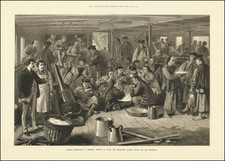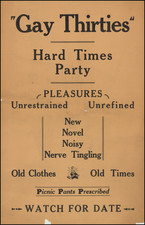"Flags of all Nations" is a meticulously compiled chart of flags, published in Glasgow circa 1934, compiled and drawn by Ernest A. Manchester, F.R.S.G.S., and published by Messrs. Brown, Son & Ferguson Ltd. A testament to the craftsmanship and attention to detail of Ernest Manchester, a fellow of the Royal Scottish Geographical Society, this chart is an immersive catalog of history and geopolitics, categorizing the symbols of nations, dominions, and various institutions that paint a vivid picture of the world as it was in the early 20th century.
The chart is divided into multiple categories and subcategories. The first section contains about 80 flags from the British Empire, a representation of the Empire's expansive reach that included regions across the globe. Each flag, from the Union Jack representing the United Kingdom to those of far-flung colonies, encapsulates the grandeur and might of the British Empire.
The second section covers the Flags of Royal Yacht Clubs and their locations. Yacht clubs, often associated with luxury and elite sporting, were spread across the British Empire, reflecting the maritime heritage of the country.
The section titled Foreign Flags and Ensigns houses over 100 flags, including those from Nazi Germany for its Army, Navy, Merchant Marine, and Air Force, reflecting the rise of the Third Reich. This section also contains flags of other nations like the Papal state, Tibet, Nepal, Danzig, Jebel-Druse, Latakieh, Manchu-Kwo, "Oman, Muscat and Zanzibar, etc.", and Trans-Jordan, indicating the geopolitical diversity of the time.
The Pilot Flags of all nations category showcases flags used by maritime pilots worldwide, a critical part of global navigation and international trade in the pre-GPS era. The International Code of Signals section features flags used for maritime communication, symbolizing the maritime code established for efficient and safe navigation.
The chart also highlights over 100 flags under "India, The Dominions, Colonies, Protectorates, Dependencies, and Mandated Territories," a testament to the colonial era's complex bureaucratic classification. Notable among these are badges of the Indian Native States used on a Red Ensign, representing the princely states of British India. Northern Ireland and the Irish Free States flags depict the partition of Ireland in 1921, a significant event in the history of the British Isles.
Flags representing the Unfederated Malay States, Federated Malay States, and Straits Settlements give an account of the British presence in Southeast Asia. Trucial Coast flags reflect the sheikhdoms that later formed the United Arab Emirates, showing the region's strategic importance for the British Empire.
Finally, the chart provides a visual record of geopolitical shifts, national identities, and colonial relations. In the sea of these colorful symbols, one can trace the outlines of historical narratives, diplomatic ties, colonial structures, and national pride. Ernest A. Manchester's "Flags of all Nations" is not merely a chart but a vivid tapestry of the world's historical, political, and cultural landscape in the mid-1930s.













![(Education Cruises) British India Steam Navigation Company [Cross-section Poster of the Dunera and Devonia]](https://storage.googleapis.com/raremaps/img/small/95418.jpg)
![Comparative Size of Lakes and Islands [Great Lakes, Cuba, Formosa, Ireland, Sicily, Cyprus, Vancouver, Sandwich Islands, Puerto Rico, Corsica, Sardinia, Balearics, Malta, etc]](https://storage.googleapis.com/raremaps/img/small/100135.jpg)

![[Set of Four Allegorical Mezzotints of the Continents -- With a Mastodon!] America. Europa. Africa. Asia.](https://storage.googleapis.com/raremaps/img/small/56726.jpg)